Related Research Articles
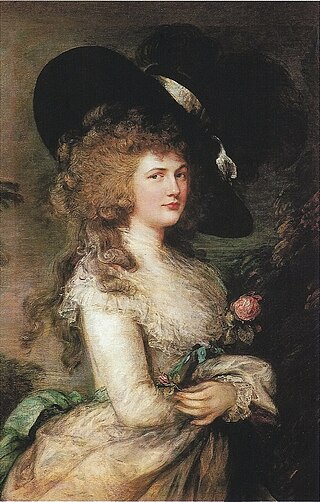
Georgiana Cavendish, Duchess of Devonshire, was an English aristocrat, socialite, political organiser, author, and activist. Born into the Spencer family, married into the Cavendish family, she was the first wife of William Cavendish, 5th Duke of Devonshire, and the mother of the 6th Duke of Devonshire.
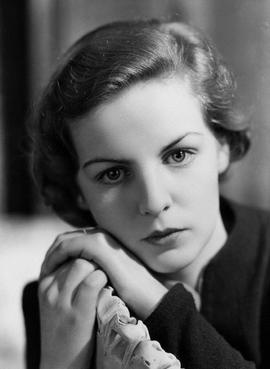
Deborah Vivien Cavendish, Duchess of Devonshire, was an English aristocrat, writer, memoirist, and socialite. She was the youngest and last-surviving of the six Mitford sisters, who were prominent members of British society in the 1930s and 1940s.

Richard Brinsley Butler Sheridan was an Anglo-Irish playwright, writer and Whig politician who sat in the British House of Commons from 1780 to 1812, representing the constituencies of Stafford, Westminster and Ilchester. The owner of the Theatre Royal, Drury Lane in London, he wrote several prominent plays such as The Rivals (1775), The Duenna (1775), The School for Scandal (1777) and A Trip to Scarborough (1777), along with serving as Treasurer of the Navy from 1806 to 1807. After dying in 1816, Sheridan was buried at Poets' Corner in Westminster Abbey, and his plays remain a central part of the Western canon and are regularly performed around the world.

Lady Caroline Lamb was an Anglo-Irish aristocrat and novelist, best known for Glenarvon, a Gothic novel. In 1812, she had an affair with Lord Byron, whom she described as "mad, bad, and dangerous to know". Her husband was the Honourable William Lamb, who after her death became 2nd Viscount Melbourne and British prime minister.

Harriet Elizabeth Georgiana Sutherland-Leveson-Gower,Duchess of Sutherland, styled The Honourable Harriet Howard before her marriage, was Mistress of the Robes under several Whig administrations: 1837–1841, 1846–1852, 1853–1858, and 1859–1861; and a great friend of Queen Victoria. She was an important figure in London's high society, and used her social position to undertake various philanthropic undertakings including the protest of the English ladies against American slavery.

Mary Alice Cavendish, Duchess of Devonshire, was a British courtier who served as Mistress of the Robes to Queen Elizabeth II from 1953 to 1967. She was the granddaughter of Prime Minister Robert Gascoyne-Cecil, 3rd Marquess of Salisbury.
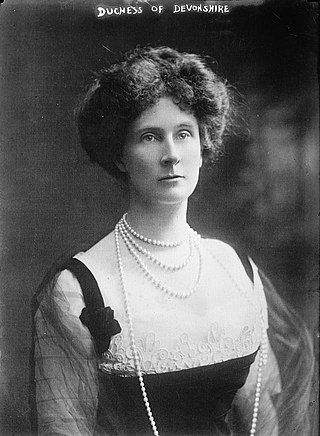
Evelyn Emily Mary Cavendish, Duchess of Devonshire, was the wife of Victor Cavendish, 9th Duke of Devonshire. She was the elder daughter of politician and diplomat Henry Petty-Fitzmaurice, 5th Marquess of Lansdowne and grew up amidst public life. Evelyn's marriage to Cavendish, nephew and heir presumptive of Spencer Cavendish, 8th Duke of Devonshire, led to her becoming Duchess of Devonshire in 1908. With her position, she oversaw the reorganisation of the Devonshire estates and presided over four English houses and one Irish castle.

Elizabeth Christiana Cavendish, Duchess of Devonshire was an English aristocrat and letter writer. She is best known as Lady Elizabeth Foster, the close friend of Georgiana Cavendish, Duchess of Devonshire. Elizabeth supplanted the Duchess, gaining the affections of William Cavendish, 5th Duke of Devonshire and later marrying him. Several of her letters are preserved.

The Duchess is a 2008 historical drama film directed by Saul Dibb, who co-wrote the screenplay with Jeffrey Hatcher and Anders Thomas Jensen, based on the 1998 book Georgiana, Duchess of Devonshire by Amanda Foreman, about the late 18th-century English aristocrat Georgiana Cavendish, Duchess of Devonshire. She was an ancestor of Diana, Princess of Wales, where the quote "There were three people in her marriage" in the promotional poster comes from.

Henrietta Ponsonby, Countess of Bessborough, born Lady Henrietta Frances Spencer, was the wife of Frederick Ponsonby, 3rd Earl of Bessborough; the couple were the parents of Lady Caroline Lamb. Her father, John Spencer, 1st Earl Spencer, was a great-grandson of John Churchill, 1st Duke of Marlborough. Her sister was Georgiana Cavendish, Duchess of Devonshire.
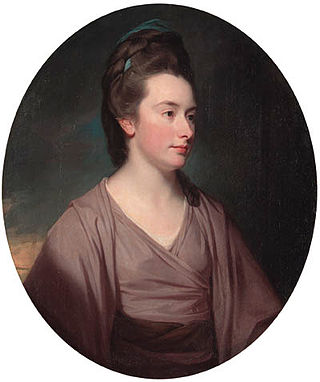
Elizabeth Lamb, Viscountess Melbourne was one of the most influential of the political hostesses of the extended Regency period, and the wife of Whig politician Peniston Lamb, 1st Viscount Melbourne. She was the mother of William Lamb, 2nd Viscount Melbourne, who became Prime Minister of the United Kingdom, and several other influential children. Lady Melbourne was known for her political influence and her friendships and romantic relationships with other members of the English aristocracy, including Georgiana Cavendish, Duchess of Devonshire, Francis Russell, 5th Duke of Bedford, and George, Prince of Wales. Because of her numerous love affairs, the paternity of several of her children is a matter of dispute.
Sophia Briscoe was an English author of two epistolary novels. Little is known of her life.
Francis Hare-Naylor (1753–1815) was an English historian, novelist and playwright. He eloped with the painter Georgiana Hare-Naylor and they had most of their children abroad. They returned to Herstmonceux when his father died. Georgiana died in Lausanne and Hare-Naylor sold Herstmonceux and never returned.

Margaret Georgiana Spencer, Countess Spencer, was an English philanthropist. She was born at St James's Palace as the daughter of a diplomat and a maid of honour to Caroline of Ansbach. In 1754, she married John Spencer, one of the wealthiest men of the era. A love match, the marriage resulted in the births of three surviving children, who included Georgiana Cavendish, Duchess of Devonshire. The Spencers became earl and countess in 1765, a reward granted by the Duke of Newcastle for John's political loyalty to the Whig party.
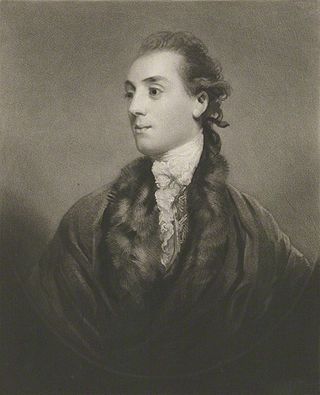
James Hare (1747–1804) was an English politician, diplomat and wit.

Harriet Leveson-Gower, Countess Granville was a British society hostess and writer. The younger daughter of Lady Georgiana Spencer and the 5th Duke of Devonshire, she was a member of the wealthy Cavendish and Spencer families and spent her childhood under the care of a governess with her two siblings.
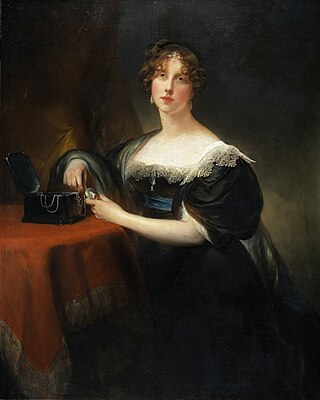
Georgiana Dorothy Howard, Countess of Carlisle was a British noblewoman. She was born after nine years of childless marriage between William Cavendish, 5th Duke of Devonshire, and his wife, Lady Georgiana Spencer, the political hostess and socialite. As such, she was a member of one of the country's grandest and richest families.

Portrait of Georgiana, Duchess of Devonshire is a portrait painting by the English painter Thomas Gainsborough of the political hostess Georgiana Cavendish, Duchess of Devonshire. It was painted between 1785 and 1787.

Albinia Hobart was an 18th-century British celebrity. She was the heiress of her father, and became the Countess of Buckinghamshire by marriage in 1793. Her lifestyle and size made her the subject and victim of cartoons by James Gillray and others; she figures in over 50 satirical prints.
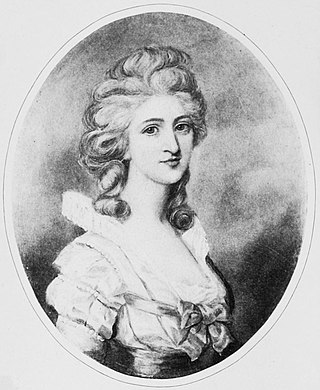
Georgiana Hare-Naylor born Georgiana Shipley was an English painter and art patron.
References
- ↑ Devonshire, Georgiana Duchess of (23 April 2010). The Sylph Paperback. CreateSpace Independent Publishing Platform. ISBN 978-1452805641.
- ↑ The Sylph (European Classics). ASIN 0810122294.
- ↑ Lewis, Jayne Elizabeth (2012). Air's Appearance: Literary Atmosphere in British Fiction, 1660-1794. University of Chicago Press. p. 90. ISBN 978-0226476698 . Retrieved 25 June 2014.